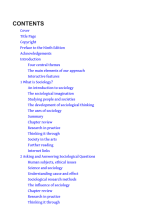Time Periods - Early Twentieth Century - Modernism
4 important questions on Time Periods - Early Twentieth Century - Modernism
What are the key characteristics of Modernism?
- Indicator of a period and style.
- ca. 1900-1945 (until the end of WW2).
- Two underlying principles:
- Breaking with traditions, searching for new aesthetics.
- Search for Abstraction
- Art should be innovative, artist is the innovator.
- Artists as Avant-Garde.
- "Era of the -isms."
- Three forms of Abstraction:
- Expressive art:
- Inner world of the artist.
- Formalist art:
- Search for universal truths in abstraction.
- Fantastic/imaginative art:
- Imagining new societies, exploring subconscious.
What are the four Modernist art movements 'before' WW1 and what form of abstraction did they use?
- Fauvism.
- Abstraction of color.
- Cubism.
- Abstraction of form.
- Futurism.
- Abstraction of movement.
- German Expressionism.
- Abstraction of emotion.
Explain German Expressionism and its characteristics:
- Modernism: Abstraction of emotion.
- Characteristics:
- Emphasis on artist's inner feelings.
- Replicating reality.
- Simplified shapes.
- Bright colors.
- Gestural brush strokes.
- Two German Schools:
- Die Brücke.
- Der Blaue Reiter.
- Higher grades + faster learning
- Never study anything twice
- 100% sure, 100% understanding
What is Der Blaue Reiter?
- Form of German Expressionism.
- 1911, Munich.
- Informal, no manifesto.
- Abstraction of emotion:
- Expres of spirituality.
- Things that's under the surface.
- No "bridge" to society/reality.
- Made art, that is free from references to the outside world.
- Difference with die Brücke (the bridge).
- Key artist(s):
- Wassily Kandisnky (1866-1944).
- Composition VII (1913).
The question on the page originate from the summary of the following study material:
- A unique study and practice tool
- Never study anything twice again
- Get the grades you hope for
- 100% sure, 100% understanding































